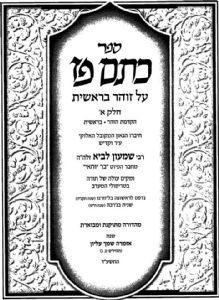A Short Tribute
Hacham Simon Labi was born in Spain in 1486. In 1492, when he was six years old, he and his family arrived in Fes, Morocco, where he studied Torah. In 1549, he set out for the Land of Israel, passing through Tripoli, Libya, where he encountered a Jewish community impoverished both economically and spiritually. The community had yet to recuperate from the 1510 Spanish conquest of its city during which 6,000 residents had been killed and 15,000 taken prisoner. The Spanish occupation continued until 1551, when Tripoli was conquered by the Ottomans. Hacham Simon Labi decided that he preferred bringing them closer to Torah and to the fear of God than moving to the Land of Israel, and remained in Tripoli.
Hacham Simon Labi led the Tripoli Jewish community through to the end of his life. He amended prayers according to the Sephardi rite, appointed teachers to the Talmud Torah, served as Halakhic adjudicator, established the city's rabbinic court, and led the community in the traditions it has maintained to this day.
Upon his arrival to Tripoli he discovered that they recited the weekday Eighteen Benedictions on the Sabbath; in order that they avoid errors, he amended that the cantor recite all seven benedictions of the Sabbath and Festival evening 'Arvit prayers aloud.
Hacham Simon Labi was also a physician who served the Bey – Turkish Sultan Yihya Pasha. His personal ties with the governor helped him revive Tripoli's Jewish community. Under the Ottoman's auspices, Jews who had fled the country because of Spanish and Maltese persecution began to return to Tripoli. As immigration of Jews expulsed from Spain, Portugal and Livorno to Tripoli resumed and commercial ties between the Ottomans and Europe developed, Tripoli began to advance towards economic recovery.
Hacham Simon Labi wrote his famous commentary on the Zohar's Genesis and Exodus sections circa 1570 but it was only in 1795, in Livorno, that the first of the two volumes, on Genesis, was first printed. Hacham Yoseph Haim David Azoulay, Maran HaHiD"A, who was in Livorno at the time, gave the work its title, Ketem Paz. Hacham Simon Labi also wrote a commentary on Milot Zarot of the Zohar found at the end of Hacham Haim Abraham Miranda's book, Yad Ne'eman.
His piyut honoring Rabbi Shimon Bar Yochai found its way into all Jewish communities, and was first adopted by the HaAR"I's students in Safed, who integrated it into the Sabbath Eve's Kabbalat Shabbat prayer. Its first printing dates back to Prague of 1611, when it appears at the beginning of Rabbi Issachar Ber of Kreminitz's book, Imrei Bina. The piyut is sung on Friday nights and has been translated into several languages.
Hacham Simon Labi passed away at the age of 100, on 15 Av, 5345 (1585). In 1911, a dispute developed between Jews and Muslims on the matter of his tomb and the Italian government ordered it be opened. To their astonishment, they discovered that Hacham Simon Labi's body, wrapped in the tallit, had remained whole as on his burial day.
